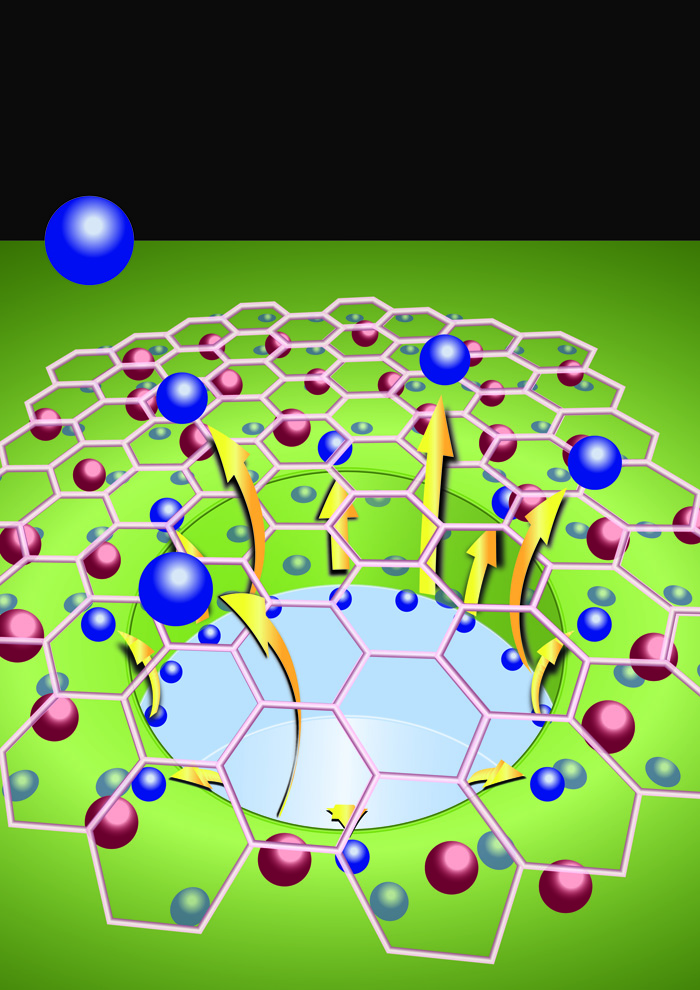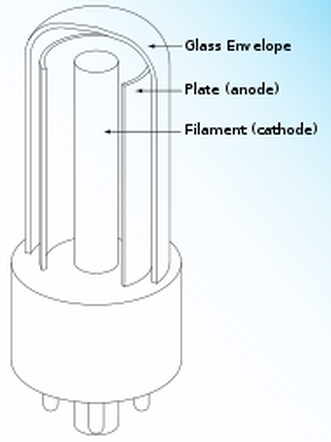I’ve seen the future of electronics and it’s … vacuum tubes!
July 12, 2012 by Amara D. Angelica

Electrons (blue spheres) emitted from the interface of oxide (green) and silicon (light blue) travel in the air and are captured at the graphene sheet (mesh of carbon atoms) (credit: University of Pittsburgh)
Huh? Yep, you read it right.
We are bumping into a limit to increasing transistor speed, determined by the “electron transit time” — the time it takes an electron to travel, says Hong Koo Kim, a professor in the University of Pittsburgh’s Swanson School of Engineering.
It’s back to the vacuum, folks.
Kim explains: electrons traveling inside a semiconductor device frequently experience collisions or scattering in the solid-state medium. Like driving on a bumpy road, which limits your speed.
The best way to avoid this scattering: use a vacuum, says Kim.
So his team redesigned vacuum tubes to be miniaturized and work as part of a semiconductor. And also to run it at low voltages (vacuum tubes use high voltages, which require a lot of energy, and are not very friendly to nanoscopic parts).
The researchers discovered that electrons trapped inside a semiconductor at the interface with an oxide or metal layer can be easily extracted out into the air (or a vacuum), because the electrons at the interface form a sheet of charges, a “two-dimensional electron gas.”

Diode vacuum tube: electrons are repelled from the negative cathode (filament) and attracted to the positive anode (plate) (credit: Wikipedia)
Like electrons in a vacuum tube, these electrons repel each other and travel in a nanometer-scale channel ballistically (like a bullet in air, unimpeded, without any collisions or scattering) toward a positive charge (on a graphene sheet, a mesh of carbon atoms)
“The emission of this electron system into vacuum channels could enable a new class of low-power, high-speed transistors, and it’s also compatible with current silicon electronics, complementing those electronics by adding new functions that are faster and more energy efficient due to the low voltage,” says Kim.
Now if we could just interface them new-fangled vacuum tubes with the Internet tubes…..